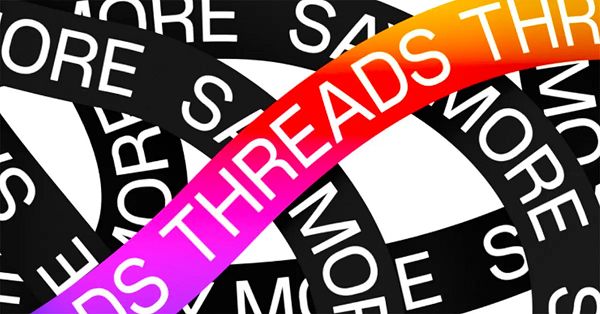If Threads wants to become a true competitor for Twitter/X, then it needs to put more focus on trending topics, and make it easier for people to engage in real-time conversation around big events.
This has been one of the major criticisms of Threads as it stands, with many Threads users still referring to X for the latest updates on sports, world events, celebrity content, etc.
Threads doesn’t have a Trending Topics display, and it’s only just started testing out topic tags in selected regions. There’s also no way to sort search results in the app chronologically, which, in combination, makes it very difficult to keep up with evolving news stories as they happen in-stream.
And over the weekend, Instagram chief Adam Mosseri provided some more insight into why the Threads team isn’t overly interested in enabling this, at least as we know it, just yet.
Upon further consideration, Mosseri offered a more in-depth response to this, explaining that:
“To clarify, having a comprehensive list of *every* post with a specific word in chronological order inevitably means spammers and other bad actors pummel the view with content by simply adding the relevant words or tags.”
Which is a common issue on X, that spammers simply add trending hashtags to their spam posts, in order to get their content in front of more people in popular streams. Which is also why Threads is limiting the use of topic tags to one per post at this stage, as a means to restrict the capacity for this to be used as a spam vector, and flood key conversation surfaces with junk.
Mosseri further notes that Threads could look to limit misuse by removing more spam content from trending results, but that’s also not so easy.
“To avoid getting overrun with bad actors and bots, search products need some ranking. You can show results in chronological order, but you then need to omit bad content that doesn’t quite cross the line and qualify to get taken down.”
Mosseri says that there are a lot of posts which most would consider junk, which also don’t cross that line, and it’s therefore difficult to give discovery more real-time focus, without imposing unfair restrictions.
Mosseri’s comments underline the Threads team’s revised approach to content ranking, which is part of Meta’s broader effort to make Threads a more positive experience than Twitter was, and X now is.
Back in October, when outlining his ambition to adapt Threads into the next billion-user app, Meta CEO Mark Zuckerberg noted that:
“I’ve thought for a long time there should be a billion-person public conversations app that is a bit more positive. I think that if we keep at this for a few more years, then I think we have a good chance of achieving our vision there.”
As such, Threads is looking to go about things differently, which may be frustrating for those seeking a straight Twitter alternative, but in the long run, could enable Meta to build a more healthy, more engaging real-time conversational experience.
Though it’s hard to see that happening without real-time immediacy, and without the capacity to identify the top discussion topics at any given time in the app.
Though Mosseri did further note that the Threads team is still iterating on this, and exploring the best way to facilitate real-time engagement. It just doesn’t have the answers yet, though ranking posts based on different parameters is one possibibility.
Could the Threads team look to highlight the top stories from noted news outlets? That could also be risky, given Mosseri’s previous statements about not wanting to over-promise reach and engagement to news outlets in the app.
Threads might also look to move to a model that ranks each profile in the app based on trust and newsworthiness related to specific topics, based on the things that each regularly posts about. Maybe that would be a more democratic way of ensuring relevance within search display, though it would also take time to develop, as Threads learns more about what each user shares in the app.
Threads could also look to employ an editorial team, which would then be able to ensure each topic stays focused, and spammers don’t get reach on certain hashtags. Limiting tag use to one per post would help in this regard, as it would make it easier for an editorial team to deactivate certain posts from a topical feed. But at the same time, that would also invite criticism over platform interference, and managing what trends and what doesn’t in the app.
As you can see, there are no easy answers, but it’s interesting that the Threads team is looking to address challenges like this, as it seeks to differentiate from Twitter, while also staying largely the same.
And if Threads can get it right, that could be a big step towards improving online engagement.
It’s a major challenge, but if anyone has the insight and data to do it, it’s Meta.



